When it was built in 1896, the underground was a miracle in itself. Fast, convenient tram under the ground. It was really nothing more than a tram “hidden” underground, as the drivers of Budapest did not really want to see such an “ugly” vehicle on Andrássy Road. They even tolerated of having the beautiful boulevard wrecked for a year and a half.
But nearly 75 years have passed and the miracle has worn off. The vehicles were obsolete, and there were only a few of them — even in the late 1940s, a car had to be reclaimed from the Museum of Transport that had already been handed over to them, namely the royal car, in order to have enough vehicles. The vehicles ran solo until 1961 and then by trailer, but a total of a maximum of 124 passengers could be accommodated on one train.
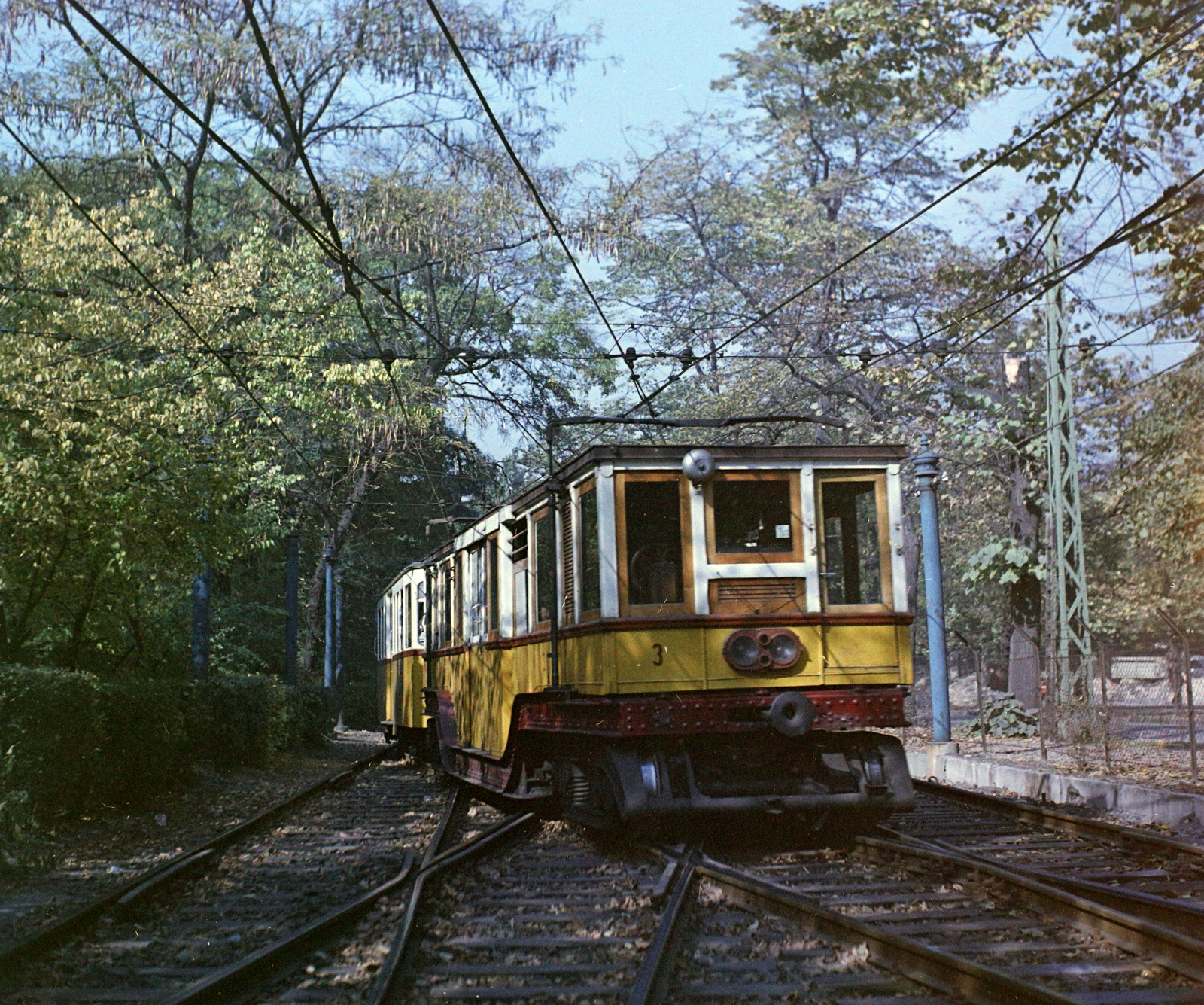
The old vehicles date back to the 19th century (Photo: Fortepan, UVATERV)
The situation was unsustainable. In addition, in the early 1970s, an anniversary approached that Budapest wanted to celebrate with spectacular investments, namely the 100th anniversary of the unification of Budapest.
On 10 April 1970, the government's economic committee decided to renovate and extend the millennium underground to Mexikó Road. As part of the renovation, it was also decided to purchase completely new vehicles, the development of which was entrusted to Ganz Works and Ganz-MÁVAG. A total of 21 assemblies had to be manufactured (two more were made later in the 1980s).
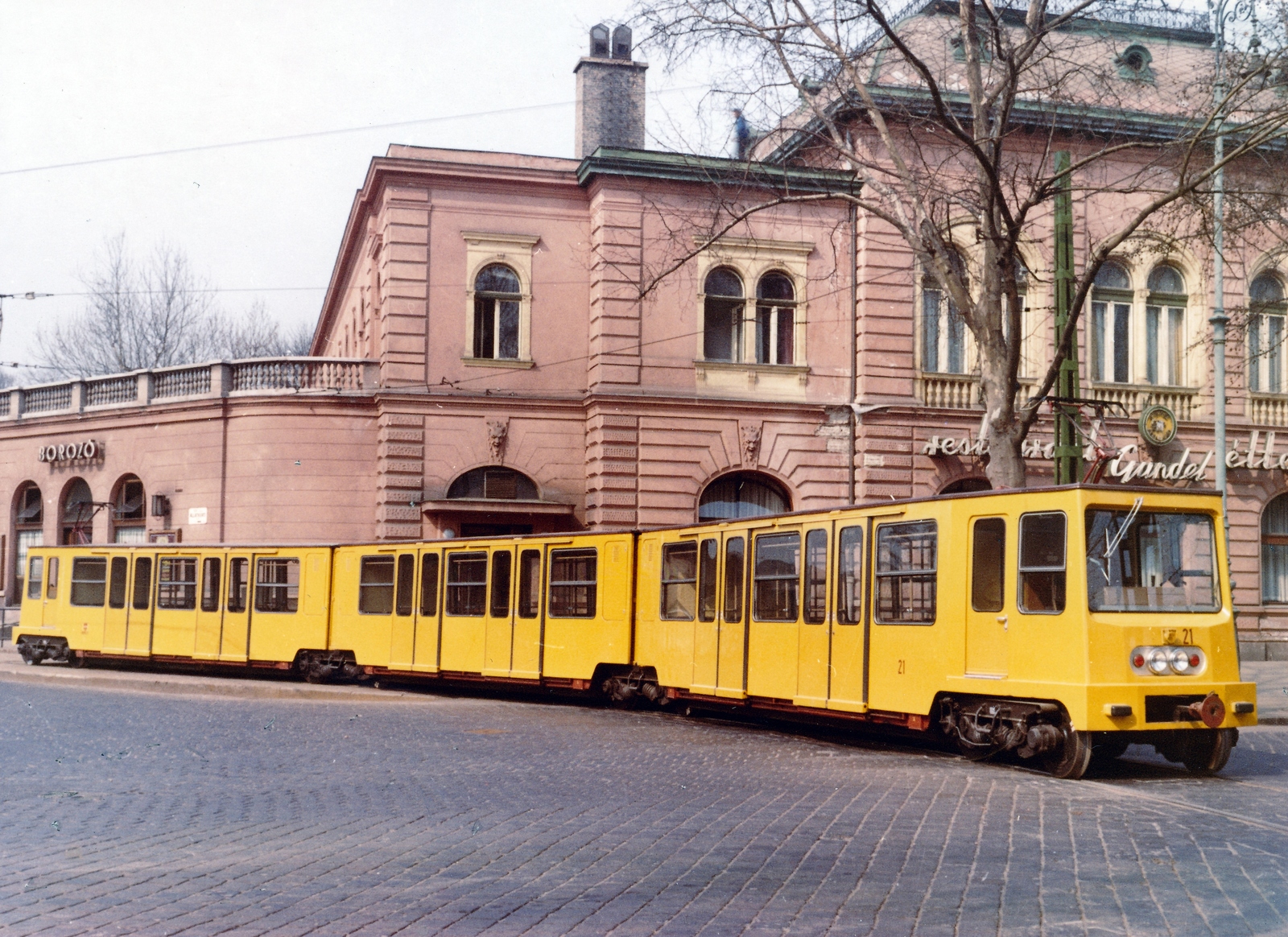
The new vehicles are articulated, but one can not walk through the train (Photo: Fortepan/No.: 154582)
Unusual challenges had to be faced with vehicles. On the one hand, the inner height of the underground tunnel was extremely low, so that a traditional-height tram or subway was out of the question. In 1896, it was only possible to fit any assembly in the tunnel with a kind of low-floor solution, the passenger compartment had to be placed between the bogies connecting the wheels, this, in turn, meant that the cab was so low that one could not or could hardly be sit or stand straight there.
This arrangement had to be applied to new vehicles as the enlargement of the tunnel was out of the question. It was no accident that the tunnel was built so low in 1896, because neither then nor in 1970 it was possible to increase the height, as the tunnel had to fit between the main collecting canal of the Outer Ring Road and the roadway of the Outer Ring Road.
The prototype of the assembly was completed as early as 1971, despite the fact that renovation and track construction and extension did not begin until 1972.
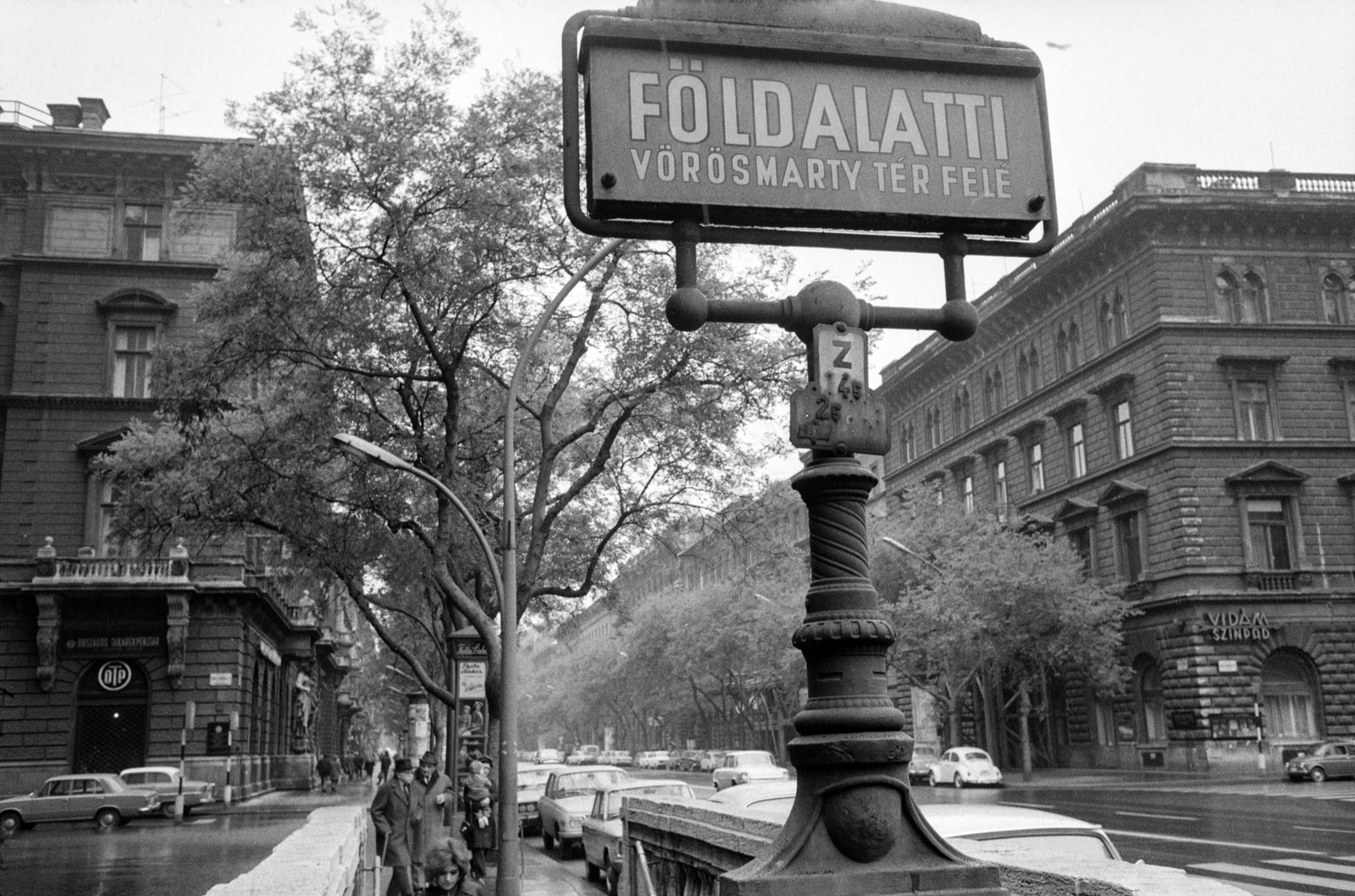
The millennium underground was renovated and extended between 1972 and 1973 (Photo: Fortepan, ETH Zurich)
Until then, the prototype had been tested on tram lines around Örs Vezér Square and Bosnyák Square. This required the use of a pantograph, which is common in trams, to reach the overhead line.
The technical solutions for the vehicles are actually the same as for Ganz's industrial articulated trams, manufactured since 1966, but in a slightly different layout. The vehicles consist of three parts and are articulated, but unlike articulated trams, they are not passable. On the one hand, there would not be enough space above the wheels, and on the other hand, the vehicle's mechanical equipment could only fit here.
A prototype of the new vehicles was unveiled to the public on 7 December 1971. The test vehicle was first in traffic unloaded and then loaded with lead pipes, but there were times when it was travelling with passengers.
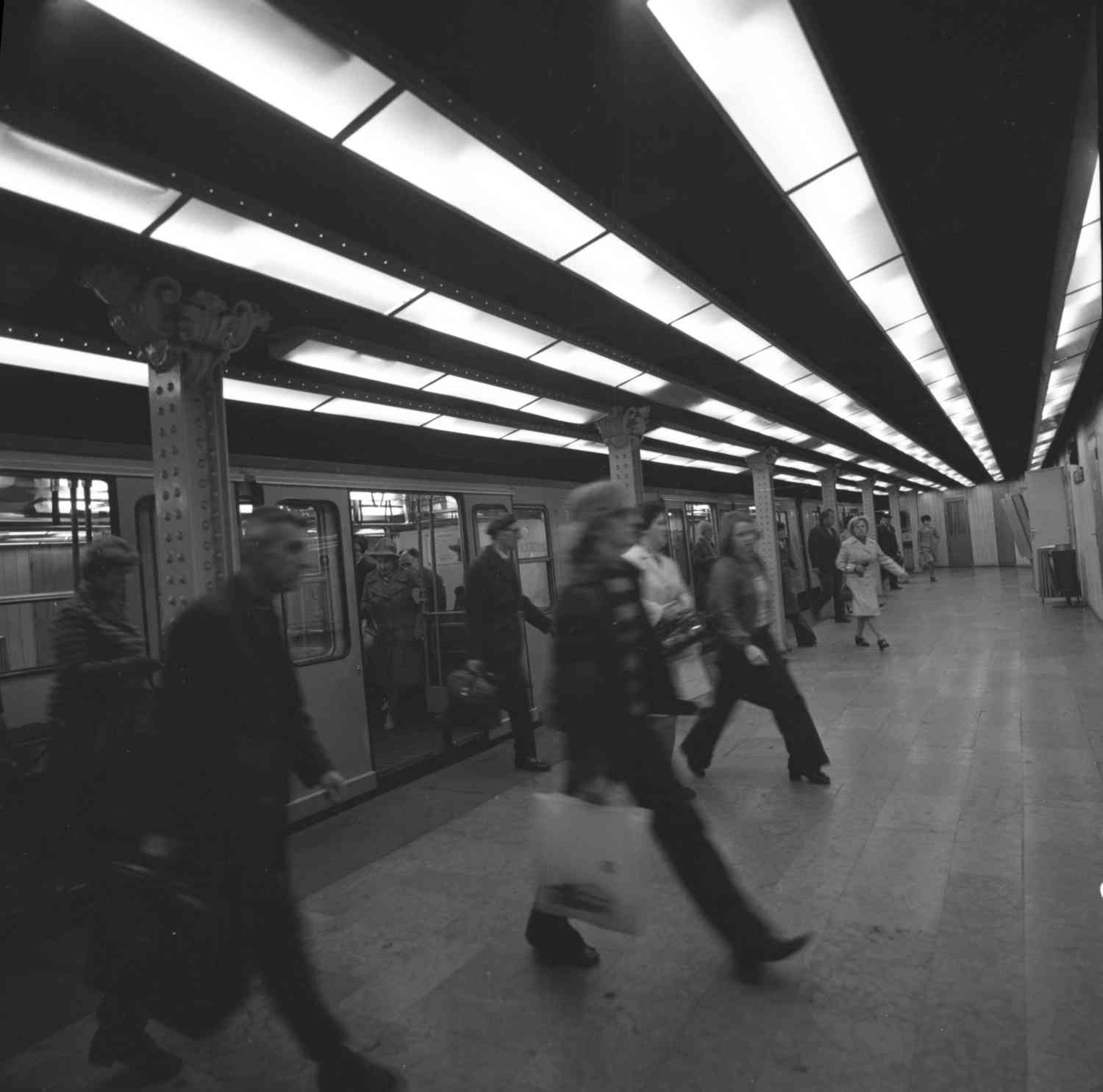
Passengers were able to take possession of the new trains at the end of 1973 and the beginning of 1974 (Photo: The Hungarian Museum of Science, Technology and Transport, Collection of Historical Photographs, No.: TFGY.2018.1606.13)
The Magyar Hírlap presented the new vehicle on 7 December 1971 as follows:
“The first two new assemblies of the millennium underground in the Ganz Works have been completed. The vehicles had been built since the beginning of April with Ganz-MÁVAG and several other subcontractors.
BKV decided to modernise its millennium underground four years before, as its pre-World War I vehicles were obsolete and they could not handle traffic smoothly with the addition of new trailers. The new vehicles are similar to articulated trams, slightly lower than them. The thirty-metre-long vehicle, although articulated, still consists of three special cars, the articulated part being closed. The 59-seater vehicle can carry 260 passengers, with six double doors on each side for quick boarding and alighting. Trial operation of the new vehicles is likely to begin as early as December. Depending on the success of the tests, the planned 19 new underground vehicles will gradually replace the old ones in 1973-74.”
In fact, the change took place all at once, with only the new vehicles running in the rebuilt underground. The new assemblies, as the article wrote, were completed in a few months. However, the quick work had setbacks: at first there were a lot of problems with them, there were ones that went off the trails.
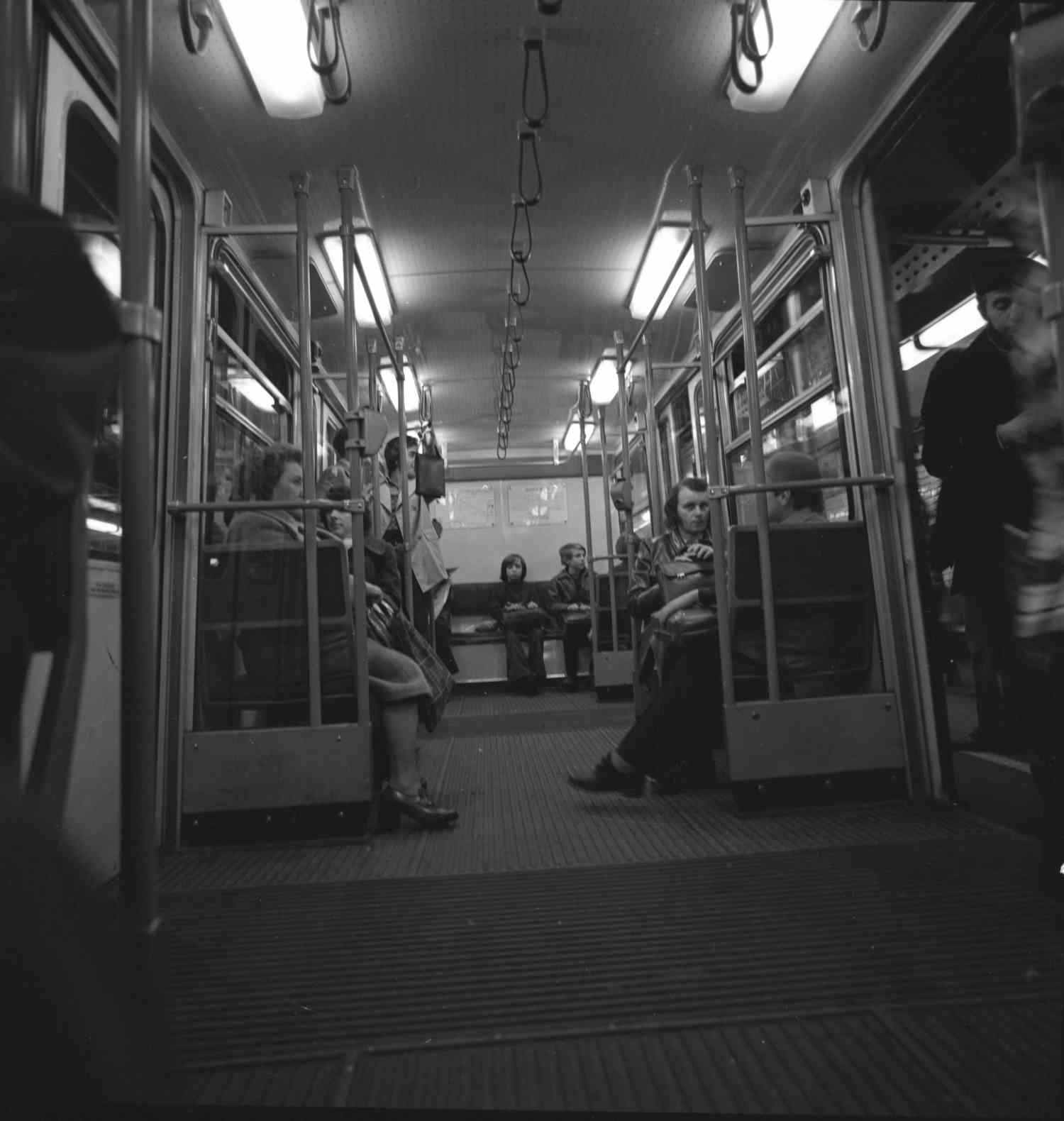
The new vehicles could accommodate many more passengers (Photo: The Hungarian Museum of Science, Technology and Transport, Collection of Historical Photographs, No.: TFGY.2018.1606.22)
A committee was set up to identify and correct the cause of the errors, which found a lot of shortcomings. According to a study quoted by Tibor Legát in his book Transport in the Capital, “it will cause constant maintenance and inspection problems throughout the life of the vehicle”. Fortunately, however, the experts were mistaken in this case, as the assemblies, after several renovations, of course, still operate reliably today, and although they are about to be replaced, until these new 21st-century vehicles arrive, these fifty-year-olds are still safely transporting passengers.
Cover photo: One of the now 50-year-old trains in 1972 (Photo: Fortepan/No.: 154584)




































Hozzászólások
Log in or register to comment!
Login Registration